Conway's Game of Life
description: Two-dimensional cellular automaton devised by J. H. Conway in 1970
20 results
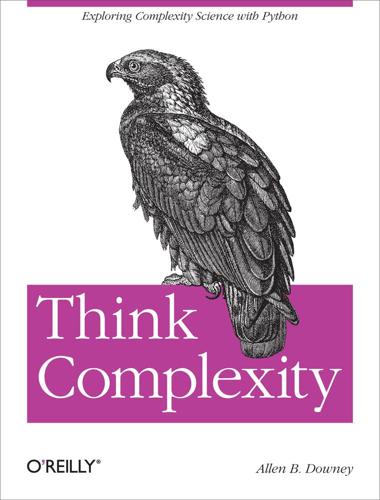
Think Complexity
by
Allen B. Downey
Published 23 Feb 2012
harmonics, Spectral Density hash function, Hashtables HashMap, Hashtables hashtables, Hashtables Hertz, Spectral Density Hist, Zipf’s Law histograms, Cumulative Distributions hoisting, Spectral Density holism, A New Kind of Model holistic model, Reductionism and Holism, Reductionism and Holism Homo economicus, The Axes of Scientific Models homogeneous, The Axes of Scientific Models hop, Stanley Milgram hurricane, Realism, Instrumentalism I id, Instrumentalism immutable objects, Representing Graphs implementing cellular automata, Implementing CAs implementing Game of Life, Implementing Life in operator, Analysis of Search Algorithms incompleteness, A New Kind of Thinking Incompleteness Theorem, A New Kind of Thinking indeterminism, A New Kind of Thinking indexing, Analysis of Basic Python Operations, Fast Fourier Transform infinite loop, Generators infinite sequence, Iterators inheritance, Representing Graphs, Representing Graphs __init__, Representing Graphs instantiate, CADrawer instrumentalism, A New Kind of Model, Instrumentalism interactions, minimizing, A New Kind of Engineering interface, CADrawer, CADrawer implementing, CADrawer specifying, CADrawer IPython, Summing Lists isolation of components, A New Kind of Engineering __iter__, Iterators iterator, Iterators iteritems, List Comprehensions itertools, Iterators J join, Analysis of Basic Python Operations K Kansas, Stanley Milgram kernel, Implementing Life KeyError, Hashtables Kosko, Bart, A New Kind of Thinking Kuhn, Thomas, Paradigm Shift?
…
Game of Life One of the first cellular automata to be studied (and probably the most popular of all time) is a 2D CA called “The Game of Life,” or GoL for short. It was developed by John H. Conway and popularized in 1970 in Martin Gardner’s column in Scientific American. See http://en.wikipedia.org/wiki/Conway_Game_of_Life for more information. The cells in GoL are arranged in a 2D grid, either infinite in both directions or wrapped around. A grid wrapped in both directions is called a torus because it is topographically equivalent to the surface of a doughnut; see http://en.wikipedia.org/wiki/Torus. Each cell has two states (live and dead) and eight neighbors (north, south, east, west, and the four diagonals).
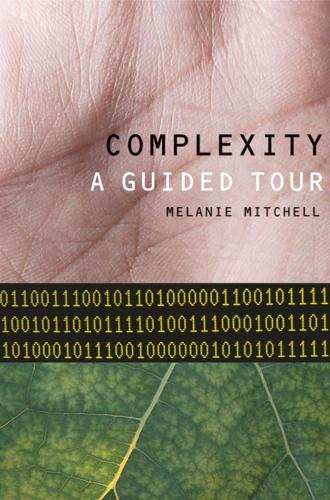
Complexity: A Guided Tour
by
Melanie Mitchell
Published 31 Mar 2009
However, in general it is hard to prove that a particular cellular automaton, Turing machine, or any other device is universal. Turing’s proof that there exists a universal Turing machine was a triumph, as was von Neumann’s proof that his self-replicating automaton was also a universal computer. Since then several researchers have proved that simple cellular automata (such as the Game of Life) are universal. In the 1990s, Matthew Cook, one of Wolfram’s research assistants, finally proved that Rule 110 was indeed universal, and is perhaps the simplest known example of a universal computer. Wolfram’s “New Kind of Science” I first heard about Cook’s result in 1998 when he spoke at a workshop at the Santa Fe Institute.
…
CHAPTER TWO Dynamics, Chaos, and Prediction CHAPTER THREE Information CHAPTER FOUR Computation CHAPTER FIVE Evolution CHAPTER SIX Genetics, Simplified CHAPTER SEVEN Defining and Measuring Complexity PART TWO Life and Evolution in Computers CHAPTER EIGHT Self-Reproducing Computer Programs CHAPTER NINE Genetic Algorithms PART THREE Computation Writ Large CHAPTER TEN Cellular Automata, Life, and the Universe CHAPTER ELEVEN Computing with Particles CHAPTER TWELVE Information Processing in Living Systems CHAPTER THIRTEEN How to Make Analogies (if You Are a Computer) CHAPTER FOURTEEN Prospects of Computer Modeling PART FOUR Network Thinking CHAPTER FIFTEEN The Science of Networks CHAPTER SIXTEEN Applying Network Science to Real-World Networks CHAPTER SEVENTEEN The Mystery of Scaling CHAPTER EIGHTEEN Evolution, Complexified PART FIVE Conclusion CHAPTER NINETEEN The Past and Future of the Sciences of Complexity Notes Bibliography Index PREFACE REDUCTIONISM is the most natural thing in the world to grasp.
…
In 2005 Lohn and his colleagues won a “Human Competitive” award for their GA’s design of a novel antenna for NASA spacecraft, reflecting the fact that the GA’s design was an improvement over that of human engineers. PART III Computation Writ Large The proper domain of computer science is information processing writ large across all of nature. —Chris Langton (Quoted in Roger Lewin, Complexity: Life at the Edge of Chaos) CHAPTER 10 Cellular Automata, Life, and the Universe Computation in Nature A recent article in Science magazine, called “Getting the Behavior of Social Insects to Compute,” described the work of a group of entomologists who characterize the behavior of ant colonies as “computer algorithms,” with each individual ant running a simple program that allows the colony as a whole to perform a complex computation, such as reaching a consensus on when and where to move the colony’s nest.
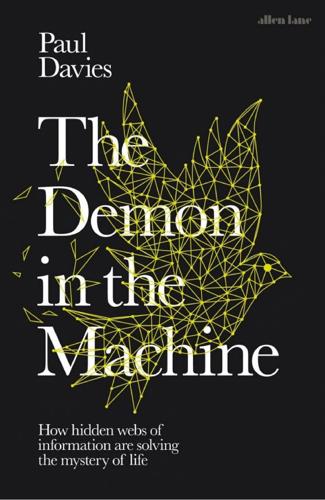
The Demon in the Machine: How Hidden Webs of Information Are Finally Solving the Mystery of Life
by
Paul Davies
Published 31 Jan 2019
Though it is tempting to think of the shapes in the Game of Life as ‘things’ with some sort of independent existence obeying certain rules, there remains a deep question: in what sense can it be said that the collision of two shapes ‘causes’ the appearance of another? Joseph Lizier and Mikhail Prokopenko at the University of Sydney tried to tease out the difference between mere correlation and physical causation by performing a careful analysis of cellular automata, including the Game of Life.7 They treated information flowing through a system as analogous to injecting dye into a river and searching for it downstream. Where the dye goes is ‘causally affected’ by what happens at the injection point. Or, to use a different image, if A has a causal effect on B, it means that (metaphorically speaking) wiggling A makes B wiggle too, a little later.
…
However, these are merely worked-out examples, and the field is still the subject of lively investigation. Nobody yet knows the minimal complexity needed for a CA computer model of a von Neumann machine, still less that for a physical UC made of molecules. Recently, my colleagues Alyssa Adams and Sara Walker introduced a novel twist into the theory of cellular automata. Unlike the Game of Life, which plays out its drama across a two-dimensional array of cells, Adams and Walker used a one-dimensional row of cells. As before, cells may be filled or empty. You start with an arbitrary pattern of filled squares and evolve one step at a time using an update rule – an example is shown in Fig. 9.

Blockchain: Blueprint for a New Economy
by
Melanie Swan
Published 22 Jan 2014

The Singularity Is Nearer: When We Merge with AI
by
Ray Kurzweil
Published 25 Jun 2024
BACK TO NOTE REFERENCE 18 “John Conway’s Game of Life,” Bitstorm.org, accessed March 10, 2023, https://bitstorm.org/gameoflife; “Life in Life,” Phillip Bradbury, YouTube video, May 13, 2012, https://www.youtube.com/watch?v=xP5-iIeKXE8; Amanda Ghassaei, “OTCA Metapixel—Conway’s Game of Life,” Trybotics, accessed March 10, 2023, https://trybotics.com/project/OTCA-Metapixel-Conways-Game-of-Life-98534. BACK TO NOTE REFERENCE 19 Stephen Wolfram, A New Kind of Science (Champaign, IL: Wolfram Media, 2002), 23–41, 58–70. BACK TO NOTE REFERENCE 20 Wolfram, New Kind of Science, 56, wolframscience.com/nks. BACK TO NOTE REFERENCE 21 Wolfram, New Kind of Science, 56, wolframscience.com/nks.

Accelerando
by
Stross, Charles
Published 22 Jan 2005
Each of these companies – and there are currently more than sixteen thousand of them, although the herd is growing day by day – has three directors and is the director of three other companies. Each of them executes a script in a functional language Manfred invented; the directors tell the company what to do, and the instructions include orders to pass instructions on to their children. In effect, they are a flock of cellular automata, like the cells in Conway's Game of Life, only far more complex and powerful. Manfred's companies form a programmable grid. Some of them are armed with capital in the form of patents Manfred filed, then delegated rather than passing on to one of the Free Foundations. Some of them are effectively nontrading, but occupy directorial roles.

Coders: The Making of a New Tribe and the Remaking of the World
by
Clive Thompson
Published 26 Mar 2019
Magazine and Its Glorious, Tedious Type-in Code,” Ars Technica, December 28, 2012, accessed August 18, 2018, https://arstechnica.com/staff/2012/12/first-encounter-compute-magazine-and-its-glorious-tedious-type-in-code; Shelby Goldstein, “Making Music with Your Vic,” Creative Computing 9, no. 7 (July 1983): 43; Marek Karcz, “Conway’s Game of Life on a Commodore 64,” Commodore and Retro Computing, September 15, 2013, accessed August 18, 2018, http://c64retr.blogspot.com/2013/09/conways-game-of-life-on-commodore-64.html. calling the trick “war dialing”: Patrick S. Ryan, “War, Peace, or Stalemate: Wargames, Wardialing, Wardriving, and the Emerging Market for Hacker Ethics,” Virginia Journal of Law & Technology 9, no. 7 (Summer 2004): 1–57, accessed August 18, 2018, https://papers.ssrn.com/sol3/papers.cfm?
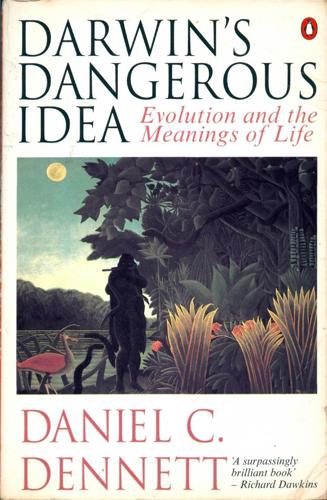
Darwin's Dangerous Idea: Evolution and the Meanings of Life
by
Daniel C. Dennett
Published 15 Jan 1995
What conditions have to be in effect for evolution by natural selection to occur? The words 1 put into Darwin's mouth were simple: Give me Order, and time, and I will give you Design. But what we have subsequently learned is that not every variety of Order is sufficient for evolvability. As we saw illustrated by Conway's Game of Life, you have to have just the right sort of Order, with just the right mix of freedom and constraint, growth and decay, rigidity and fluidity, for good things to happen at all. You only get evolution, as the Santa Fe motto proclaims, on the edge of chaos, in the regions of possible law that {222} form the hybrid zone between stifling order and destructive chaos.

The Man From the Future: The Visionary Life of John Von Neumann
by
Ananyo Bhattacharya
Published 6 Oct 2021
The picture that emerges is a triangle composed of triangles, a sort of repetitive jigsaw puzzle, in which each identical piece is composed of smaller pieces, drawing the eye into its vertiginous depths. This kind of pattern, which looks the same at different scales, is known as a fractal, and this particular one, a Sierpiński triangle, crops up in a number of different cellular automata. In Life, for example, all that is required for the shape to appear is to start the game with a long line of live cells. Still, pretty as these patterns are, they are hardly surprising. Looking at them, one could guess that a simple rule applied many times over might account for their apparent complexity.

All Your Base Are Belong to Us: How Fifty Years of Video Games Conquered Pop Culture
by
Harold Goldberg
Published 5 Apr 2011
Little Computer People was occasionally hilarious and featured a slow-moving cartoonlike character called Darren who would write you letters saying, “I have many hobbies that occupy my time.” To prove it, he watched TV, exercised, and searched for someone to live in his computer with him. Finally, Wright was impressed with John Horton Conway’s theories of cellular automata, which were espoused in The Game of Life. In his 1970s simulation game, Conway showed that you could emulate the complex patterns of the birth and death of organisms living together in society—and everything in between. All these combined to influence Wright as he dreamed up a project whose working title was Home Tactics, the Experimental Domestic Simulator.
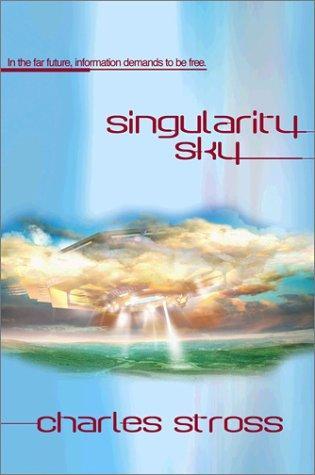
Singularity Sky
by
Stross, Charles
Published 28 Oct 2003
"Normally he has a lot of background detail. Every word means something. But it's as if he doesn't want to say too much about the Festival. They're—he called them, uh, glider-gun factories. I don't know if you know about Life—" "Cellular automata, the game?" "That's the one. Glider guns are mobile cellular automata. There are some complex life structures that replicate themselves, or simpler cellular structures; a glider-gun factory is a weird one. It periodically packs itself into a very dense mobile system that migrates across the grid for a couple of hundred squares, then it unpacks itself into two copies that then pack down and fly off in opposite directions.
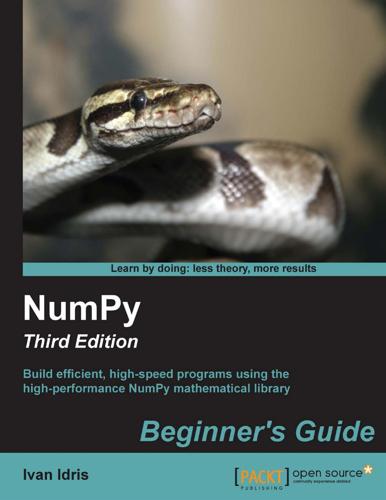
Numpy Beginner's Guide - Third Edition
by
Ivan Idris
Published 23 Jun 2015
Finally, fush the result: glColor3f(1.0, 0, 0) vertices = np.array([[0, 0], [DIM/2, DIM], [DIM, 0]]) NPOINTS = 9000 indices = np.random.random_integers(0, 2, NPOINTS) point = [175.0, 150.0] for i in xrange(NPOINTS): glBegin(GL_POINTS) point = (point + vertices[indices[i]])/2.0 glVertex2fv(point) glEnd() glFlush() The Sierpinski triangle looks like the following: The full Sierpinski gasket demo code with all the imports is as follows: import pygame from pygame.locals import * import numpy as np from OpenGL.GL import * from OpenGL.GLU import * def display_openGL(w, h): pygame.display.set_mode((w,h), pygame.OPENGL|pygame.DOUBLEBUF) glClearColor(0.0, 0.0, 0.0, 1.0) glClear(GL_COLOR_BUFFER_BIT|GL_DEPTH_BUFFER_BIT) gluOrtho2D(0, w, 0, h) def main(): pygame.init() pygame.display.set_caption('OpenGL Demo') DIM = 400 display_openGL(DIM, DIM) glColor3f(1.0, 0, 0) vertices = np.array([[0, 0], [DIM/2, DIM], [DIM, 0]]) NPOINTS = 9000 indices = np.random.random_integers(0, 2, NPOINTS) point = [175.0, 150.0] for i in xrange(NPOINTS): glBegin(GL_POINTS) point = (point + vertices[indices[i]])/2.0 glVertex2fv(point) glEnd() glFlush() pygame.display.flip() while True: for event in pygame.event.get(): if event.type == QUIT: return if __name__ == '__main__': main() What just happened? As promised, the following is a line-by-line explanaton of the most important parts of the example: Simulation game with Pygame As a last example, we will simulate life with Conway's Game of Life . The original game of life is based on a few basic rules. We start out with a random confguraton on a two-dimensional square grid. Each cell in the grid can be either dead or alive. This state depends on the neighbors of the cell. You can read more about the rules at http://en.wikipedia. org/wiki/Conway%27s_Game_of_Life#Rules At each step in tme, the following transitons occur: 1.

Radical Technologies: The Design of Everyday Life
by
Adam Greenfield
Published 29 May 2017

In Our Own Image: Savior or Destroyer? The History and Future of Artificial Intelligence
by
George Zarkadakis
Published 7 Mar 2016
We do not yet know whether this attraction is governed by a general law for biology. However, we have discovered something that seems to point towards such a law: Rule 110, a recursive algorithm that is Turing complete and lifelike – and there might be more.23 This profound correlation between cellular automata and biological phenomena suggests that life is governed by recursive computations, probably similar – or identical – to cellular automata. There is one more special feature of complex computations that is worth noting. They are fractal-like and scale-invariant. This means that they repeat themselves at every scale.

Coders at Work
by
Peter Seibel
Published 22 Jun 2009
Isn't that about the same time the Altair was coming out? Peyton Jones: That's right. Hobbyist computers were definitely starting to come out. But we considered those to be rather cheating. The thing about this machine that we built ourselves was that software was the problem. I think my most advanced program for this machine was Conway's Game of Life. That worked very nicely. But writing any kind of serious program, like a programming language, was just too much work because it had very limited permanent storage medium. And it was all typing in hexadecimal stuff—no assembler. Seibel: So more raw machine code. Peyton Jones: Of course the Cambridge mainframe understood BCPL so we were writing lots of BCPL programs.
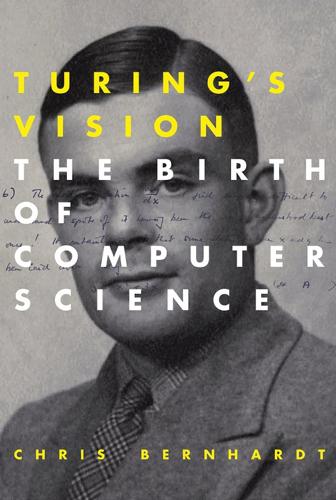
Turing's Vision: The Birth of Computer Science
by
Chris Bernhardt
Published 12 May 2016

The Transhumanist Reader
by
Max More
and
Natasha Vita-More
Published 4 Mar 2013

The Deep Learning Revolution (The MIT Press)
by
Terrence J. Sejnowski
Published 27 Sep 2018
One of the implications of this discovery is that the remarkable complexity we find in living things could have evolved by sampling the simplest space of chemical interactions between molecules. That complex combinations of molecules have emerged from evolution should be expected and not considered a miracle. But cellular automata may not be good models for early life, and which simple chemical systems are capable of creating complex molecules remains an open question.9 It might be that only special biochemical systems have this property, which could help narrow the possible set of interactions from which life could have originated. An essential property of life is a cell’s ability to replicate itself, an ability explored by the Hungarian-born American mathematician John von 200 Chapter 13 Neumann at the Institute for Advanced Study in Princeton in the 1940s using cellular automata.

Tools for Thought: The History and Future of Mind-Expanding Technology
by
Howard Rheingold
Published 14 May 2000

The Singularity Is Near: When Humans Transcend Biology
by
Ray Kurzweil
Published 14 Jul 2005